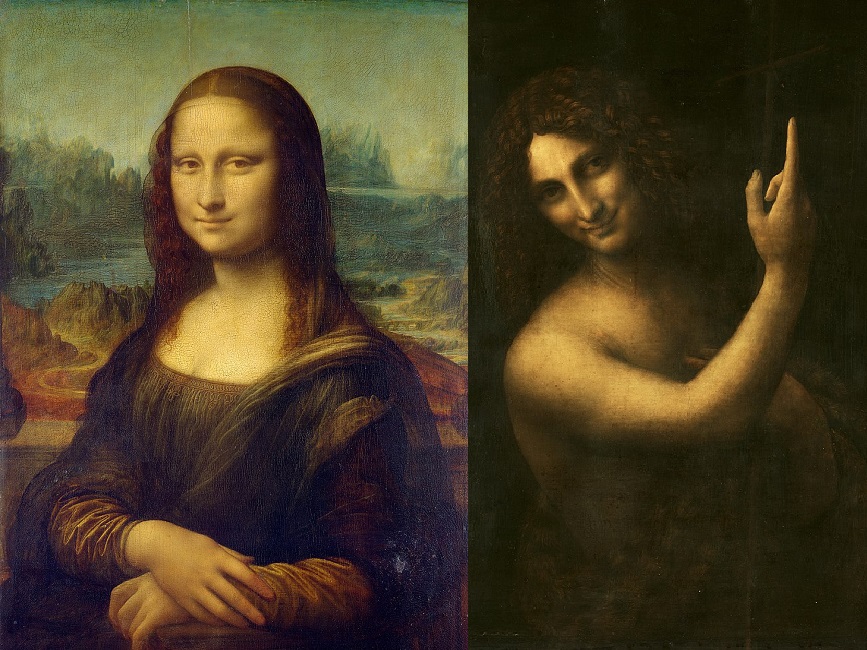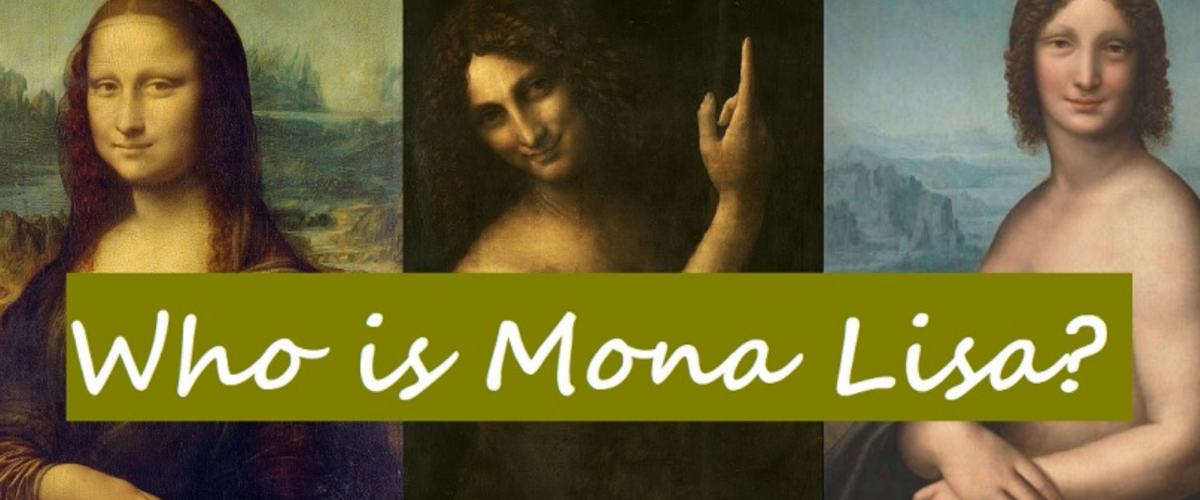by Hansini 2021-08-08
The Mona Lisa portrait called Gioconda in Italian is the most popular, talk about, visited, written about, and valuable painting. Created in 1503-1506 by the Italian painter Leonardo da Vinci, it is now placed in Louvre Museum in France, Paris.
In 1517, Leonardo da Vinci moved to France in Château du Clos Lucé, when the French king, King Francis offered him a job as a court painter, engineer, and architect. At that time da Vinci brought only one painting with him, which was the Mona Lisa. He kept the portrait with him, until his last breath.
Advanced techniques
Mona Lisa is one of the most advanced paintings of its time due to the technique of Leonardo. Leonardo was a genius who made a lot of research on muscles movements to achieve this distinctive 3-dimensional art. He used techniques like sfumato to blend the eyes and mouth of the painting so soft that she looks alive. It was the first painting ever to use aerial perspective behind Mona Lisa that made her pop out. If you look into her eyes you will see her eyes following you and you will see her smiling but if you look at her lips, she is not smiling. If you don’t pay attention well you won’t see her veil which now you’ll see. Leonardo knew how to manipulate shadows to create those illusions.
Theories of the real Mona Lisa
There were many theories of who the woman in the portrait might be, but none of these theories has been proven hundred per cent. However, some theories have more evidence than others. Mona Lisa is more than five hundred years ago and it is still one of the most advanced paintings ever made, but we don’t know-how, for whom, and why it was created. Some believe that the sitting woman in the painting is Leonardo da Vinci himself portrait as a woman. Some say she is the woman portrait of da Vinci’s assistant Salai. While many other noblewomen were thought to be her, but the one with the most evidence is Lisa del Giocondo.
Is Salaì, the assistant of da Vinci the real Mona Lisa
Gian Giacomo Caprotti da Oreno known as Salaì was the assistant of Leonardo da Vinci from the age of 10. Even though Leonardo claimed that Salaì was a thief as he stole from him several times but Salaì was allowed to stay with him and learn painting from Leonardo for more than 25 years. He was one of the favourite students of Leonardo and was described as sensual from what we can see of the possible portrait of Salaì from Leonardo.
Salaì is thought to be the real Mona Lisa due to the similarities of the Mona Lisa with Saint John the Baptist, a Leonardo painting that is believed to be based on Salaì himself. The painting as shown below has the same vibes as Mona Lisa. You can see a vivid gaze of Saint John the Baptist which seems to be the same as the Mona Lisa. His smile seems to be a continuity of Mona Lisa’s smile. Their nose and face structures have lots of resemblances if not the same, it is almost the same.
The women portrait didn’t normally look that confident back in that era, they usually looked away from the frame. They were wearing their best jewellery, makeup, and a beautiful veil as it was a once-in-a-lifetime moment to have a painting of themselves in that time. However, Mona Lisa was the first painting of a woman who looked so confident, with a teasing smile and very simple getup. Her posture and eyes looked very sharp, with no jewellery, no makeup and let down hair (that was not a usual practice for women at that time). Is it possible to have so much distinctiveness because she was actually a man, nonetheless but Salaì himself? We cannot answer this question with assertion as there is not enough evidence to support this theory but there is a possibility.
Salaì on the other hand did repaint Mona Lisa but his painting have even more similarities to himself. Salaì painting is called Monna Vanna which is a nude version of the original painting. Except for her chest, this painting has a masculine vibe and the face looks more similar to the Saint John the Baptist, Leonardo painting.

Is Lisa del Giocondo the real Mona Lisa
It was about 31 years after the death of Leonardo da Vinci that a Renaissance art historian Giorgio Vasari claimed that the painting of the Mona Lisa is Lisa del Giocondo. It is believed that after the death of Leonardo, Salaì possessed a painting which he named la Gioconda in his paper. This can be proof that there was a painting of Lisa del Giocondo but it was not enough to prove that she was the Mona Lisa, especially because it was many years after the death of Leonardo.
Furthermore, more clues were found in 2005 when a page from a copy of Cicero the ancient Roman author was discovered. The book of that page was owned by Agostino Vespucci who was a Florentine chancellery and seems to know Leonardo. In the paper, he wrote notes at the marginal corner. On that particular page where there were writings on Pelley’s ancient Greek artist, Agostino wrote a note saying he did just the same thing as Leonardo in his portrait of Lisa del Giocondo and then he marked the date October 1503. Which was the same year that Mona Lisa was painted and there is a possibility that he saw the painting and referred to it.

Who was Lisa del Giocondo?
Lisa del Giocondo born Ghevardini and married in the Giocondo family. Her husband Francesco del Giocondo was a rich silk merchant and eventually, he became a local official. He was the one who requested Leonardo to paint his wife as a celebration for their new house and second-born child. Francesco is believed to have a reputation of impatience and aggression, which could be the reason Leonardo agreeing to paint his wife. However, it can be some other reason behind Leonardo motivation to paint Lisa. It might be because he appreciated her simplicity which he actually portraits by focusing on her face and posture, her eyes mostly without any other distractions such as a big veil, jewellery and makeup. Lisa del Giocondo is believed to be the neighbour of Leonardo in Italy as well and her husband was a client of Leonardo father. This can lead to the assumption that they knew each and one lead to another, this legendary painting happens to be.
It is also believed that Leonardo brought entertainment such as music during the time of painting to cheer up Lisa. In order to get the distinctive look on her face, as it can be impossible to keep smiling for that long.
However, the biggest question is why the Mona Lisa painting stayed with Leonardo until his last breath when he was actually supposed to hand the painting to Lisa’s husband.
Two Mona Lisa
This created many assumptions that there might be more than one copy of Mona Lisa, one for Francesco and the other is in Paris. This emerges when news hit the headline in 1914. It is believed that the original was bought from a private family. Many analyses have been done to prove that there is a second original Mona Lisa but still no 100 per cent authentication. The Isleworth Mona Lisa portrait is believed to be the original one as there are pillars at the two corner sides of the portrait which is the same as Leonardo’s student Raphael painting of the Mona Lisa which was done based on the early version of the original. The face of the painting seems to be very light which might create the doubt of it being from 1503. Many other assumptions were made that there is a second copy of Mona Lisa somewhere. But it has not been fully proven of any being the original one.
In 2004, a French scientist, Pascal Cotte, used a multispectral camera to scan the Louvre Mona Lisa for an in-depth analysis. He found out that there was another painting underneath, which was Mona Lisa bigger. She seems to be closer and she was looking away instead of directly to the focus point.
This indicates that Leonardo made a portrait that he overpainted the final Mona Lisa version. This can also mean the second version is underneath the louvre one. Thus this emerges another question, why overpaint Lisa and still not give it to Francesco?
Leonardo attachment to Mona Lisa
One thing we observed was that Leonardo had lots of attachment to this particular painting as Mona Lisa was the only painting that he brought with him to France. This could lead to the assumption that maybe he painted Lisa which was the first layer. Then he wanted to keep the painting and overpaint Mona Lisa differently. But was the difference Salaì or just his imagination? There is a possibility that the Mona Lisa never existed as a person, as the painting seems to be differently posed and dress up as of woman of that time. We still don’t know which theory is the real one.

